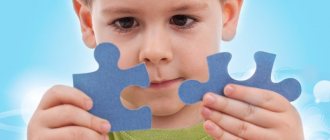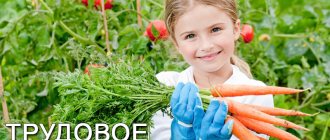The importance of environmental education for preschool children
Svetlana Evseeva
The importance of environmental education for preschool children
THE IMPORTANCE OF ECOLOGICAL EDUCATION FOR PRESCHOOL CHILDREN.
The formation of the initial foundations of ecological culture is the accumulation of specific, sensory ideas about objects and natural phenomena that surround children and are part of their life activities. An important aspect of environmental education is the formation of children’s understanding of the specifics of a living object, its fundamental difference from an object (inanimate object), the formation of elementary skills of proper interaction with plants and animals, participation in activities to create the necessary conditions. Raising children will not become ecological if already at this age they will not understand: the plant on the window needs water, the parrot in the cage needs grains and water, the birch tree and flowers on the site need water, and the birds in winter need feeders and bread crumbs. Familiarization with natural objects, their parts, basic properties, visual ways of functioning in under completely certain conditions - this is the formation of initial ecological ideas ... The correct attitude towards living things is the end result, an indicator of environmental education , manifested at this age only in the voluntary and active participation of children in joint activities with adults.
Environmental education of preschool children involves the development of a humane attitude towards nature (moral education , the formation of a system of environmental knowledge and ideas (intellectual development, the development of aesthetic feelings (the ability to see and feel the beauty of nature, the participation of children in activities feasible for them to care for plants, to protect and protection of nature.
When forming a humane attitude towards nature, it is necessary to proceed from the following: the main thing is that the child understands that man and nature are interconnected. Feelings of compassion and empathy determine an effective attitude towards nature, expressed in a willingness to take care of those who need it. It must be remembered that children’s often careless and sometimes cruel attitude towards nature is explained by their lack of the necessary knowledge. That is why the education of empathy and compassion occurs in inextricable unity with the formation of a system of environmental knowledge accessible to preschoolers , which includes:
Ideas about plants and animals, their needs and ways to satisfy these needs; understanding the relationship between living beings and their environment, realizing that all living beings on Earth are connected to each other by a complex system of relationships (biological balance)
and at the same time, each of them has its own
ecological niche , and all of them can exist simultaneously.
Together with parents and children, we created an environmental book (based on the poem I gave about wildlife, attitude towards animals, rules of behavior in nature, they drew a picture) I bring to your attention the cover of the book!
MAGAZINE Preschooler.RF
The influence of environmental education on the spiritual and moral development of a preschooler’s personality“A man became a man when he heard the whisper of leaves and the song of a grasshopper, the murmur of a spring stream and the ringing of silver bells in the bottomless summer sky, the rustle of snowflakes and the howling of a blizzard outside the window, the gentle splash of a wave and the solemn silence of the night - he heard, and, holding his breath, listens hundreds and thousands of years of wonderful music of life . V. A. Sukhomlinsky.
Indeed, the natural world is amazing and beautiful, nature is an endless source of emotional states, an unquenchable desire to learn.
At the present stage, the government of the Russian Federation pays great attention to the greening of society: 2013 was declared the Year of Environmental Protection; 2022 is the Year of Ecology and Specially Protected Natural Areas.
Environmental education in kindergarten is an important area of the educational process. It provides great opportunities for the development of not only the cognitive and communicative activities of a preschooler, but also has a huge impact on the spiritual and moral development of children. Environmental education of preschoolers should also be considered, first of all, as moral education, because the basis of a person’s attitude to the natural world around him should be humane feelings, that is, awareness of the value of any manifestation of life, the desire to protect and preserve nature.
The problem of spiritual and moral development is extremely relevant. At the present stage, there is an alienation of children from nature as a source of spirituality and morality, which leads to minimal communication between children and nature. Environmental education should begin from preschool age, where the foundations of children's environmental culture and behavior in nature are laid.
The Concept of Spiritual and Moral Development and Personality Education of a Russian Citizen (authors A. Ya. Danilyuk, A. M. Kondakov, V. A. Tishkov) defines basic national values, which in turn are revealed in a system of moral values, among which is patriotism , citizenship, work and creativity, and, of course, nature and humanity.
Native nature is a powerful source from which a person draws his first knowledge and impressions. It leaves a deep mark on the child’s soul, influencing his feelings with its brightness and diversity.
Children need to be instilled with a love of nature from a very early age. “Love for nature, however, like any love, undoubtedly begins in childhood ,” wrote the Russian writer and journalist Ivan Sergeevich Sokolov-Mikitov.
To protect and truly love nature, you need to know it. Ignorance of nature often causes indifference, and sometimes even cruelty towards all living things.
Kids are delighted at the sight of a flower or a butterfly, and at the same time they can thoughtlessly break a branch, crush an ant running along a path, ruin an anthill, trample a beetle, hit a frog with a stick, without even suspecting that this causes enormous harm to nature. Often children remain deaf to kindness, sympathy, empathy, and cannot always understand the need to protect nature.
How can we teach them to take care and protect nature, all living things that surround us?
Reading fiction helps to cultivate kindness, care, and mercy. Fiction about animals and plants expands the range of ideas about nature, creates the basis for acquiring new knowledge, and fosters love for one’s native land.
We systematically get acquainted with the works of M. Prishvin, K. Paustovsky, V. Bianki, K. Ushinsky, N. Sladkov and the ecological fairy tales of N. Ryzhova, the plots of which are accessible and attractive, teach the child to be observant, to treat with love everything that exists and lives nearby.
I pay special attention to ethical conversations on environmental topics based on stories and fairy tales. “Finch” helped to clearly and interestingly reveal the topics of such conversations. After a conversation on the issues, I brought the children to the conclusion: If you have a living creature, then you must constantly take care of it.
The topic of great conversation was A. Barto’s poem “We Didn’t Notice the Beetle . This work provides an example of a humane attitude towards nature that preschoolers can understand, which can be used as an example to follow. I bring to the attention of children fairy tale stories in which all events are based on real facts of natural life. Their heroes are plants, animals, streams and rivers. For example, the ecological fairy tale “What is the stream whispering about?” , “Why is the titmouse crying?” , “Green Traveler” , “Lopushok. How easy it is to go for a walk after reading an environmental fairy tale and find the hero of the story you just read. “Look, this burdock grew from that same seed. But this is a different story and a completely different fairy tale . And gradually what has become familiar will become not fleeting, but familiar, understandable, pleasant. And the hand will no longer rise without the need to tear it out, break it. Fiction about nature has a deep impact on children's feelings. After reading, you see sympathy, empathy or joy, delight in the children’s eyes.
So that my children are sensitive to beauty, I constantly reinforce ideas about what they see. I explain that a large bouquet looks cumbersome and, in addition, we ruin a lot of flowers.
We foster humane treatment of animals. But which ones? To cats, to birds, frogs, snakes. This is amazing. Well, what about spiders? To insects? To some extent, to them, too. But it is absolutely clear that we have not yet taken education to its logical conclusion, to instilling a caring attitude towards any manifestations of life. To anyone. To a blade of grass, very young, which grew a whole centimeter this morning. To a multi-colored bug that looks like a plastic toy on this blade of grass. To the clumsy caterpillar, gnawing a nettle leaf with such appetite. We ourselves have not fully realized that in nature not only mountain peaks and thousand-year-old oaks are beautiful and unique. Beauty and uniqueness are in every leaf, in every blade of grass, in any living creature, even one that is not very remarkable at first glance.
What should you tell the kids about mosquitoes? Are they harmful or beneficial? They are harmful because they suck blood, interfere with rest, and some even carry malaria. They are useful because mosquito larvae serve as valuable food for fish. It happens that the destruction of mosquitoes in ponds leads to mass death of fry. They are also useful because they pollinate flowers, and in some places in the taiga they are the only pollinators, and therefore are absolutely necessary for the existence of plants there.
What should you tell your children about flies? First of all, flies are different. For example, flower flies or hoverflies. Their larvae destroy aphids. And the larvae of carrion flies, as well as gray meat flies, develop in animal corpses. Carl Linnaeus also said that three flies can eat a dead horse faster than a lion. Therefore, there is no need to kill either the blue ones that shimmer with metal, or the green ones like emerald, or the huge gray ones with a checkerboard pattern on their belly, if they fly into the room. These insects are orderlies. They need to be carefully released outside through a door or window.
Watching children, you are convinced that the joy of communicating with nature makes their lives emotionally richer. So that children in the future, in adulthood, can draw inspiration and strength, love and wisdom from nature, we need to teach them to treat plants and animals with care and sensitivity, and take care of them.
A feature of environmental education is the great importance of a positive example in the behavior of adults. Therefore, I pay considerable attention to working with parents, trying to achieve complete mutual understanding. In my work with parents, I actively use such a form of work as Environmental Action.
For example:
Environmental campaign for collecting waste paper “Save a tree” . The main goal of which is to form a responsible attitude of children and their parents towards the environment.
Unnecessary paper is not garbage, it is secondary raw material called WASTE PAPER. Parents participated in the event with great enthusiasm, bringing old newspapers, magazines, books, cardboard packaging, and advertising printed materials.
Environmental campaign: “Let’s save the green Christmas tree . Its essence lies in the fact that on the eve of a holiday, for example, New Year, children take home leaflets with approximately the following content: “Mom! Don’t cut down the Christmas tree, it’s alive!” or “Do you really want to celebrate the New Year under a dying tree? ”
Environmental campaign: “Let’s feed the birds in winter, they will answer you kindly in summer . Winter is not only a fun time for holidays, but also severe frosts with piercing winds. This is the most difficult time for wintering birds. Birds suffer greatly from the cold.
At this time, natural food is practically unavailable to birds and they often do not survive until spring.
During the event, children learn a lot about birds. So, for example, what types of birds remain to spend the winter in our area. How to distinguish birds by color, what food they prefer. But most importantly, they will understand that it is in our power to help the birds - our smaller brothers, to take care of them, because we are people
I suggested that parents and their children make bird feeders. During our walks, we hung feeders on the site and agreed to replenish them with food supplies daily.
Environmental campaign: “House for the starling” . With the onset of spring, migratory birds return to our region. We are wondering how to attract starlings to our kindergarten site? What can we do about this? Hanging birdhouses is an old folk tradition. Birds living nearby help in the fight against pests and delight us with their singing. To solve this problem, we asked our parents to help us make birdhouses, which we hung in our area and watched the life of the birds.
To expand children's understanding of natural phenomena, I use a variety of games: didactic, active, creative. In them, children accumulate sensory experience and creatively master acquired knowledge.
Among the variety of games for preschoolers, a special place belongs to didactic games, which are diverse in their content, game material, game actions, and cognitive activities.
Didactic games of ecological content help children see the uniqueness of not only a certain living organism, but also the ecosystem, realize the impossibility of violating its integrity, and understand that unreasonable intervention in nature can lead to significant changes both within the ecosystem itself and beyond its borders.
In the process of communicating with nature through play, children will develop emotional responsiveness, the ability and desire to actively preserve and protect nature. Children learn to see living objects in all the diversity of their properties and qualities, features and manifestations; participate in creating the necessary conditions for the normal functioning of living beings within the reach of children; understand the importance of nature conservation and consciously follow the norms of behavior in nature.
Observations on a walk enrich your understanding of the world around you and form a friendly attitude towards nature. Teachers teach children to observe various objects and phenomena; At the same time, it is not necessary to observe only those objects and phenomena that are planned. Observations of animals and natural phenomena can be random and unexpected, so this opportunity should not be missed.
Children have a desire not only to see everything, but also to touch it with their hands: collections of stones, the bark of various trees, to identify clay and sand by touch, etc. In addition, I combine environmental education with aesthetic education. Children try to display their most vivid impressions of natural phenomena and objects in their drawings, applications, and modeling.
Children sculpt study objects (for example, various animals) from plasticine. I also pay a lot of attention to drawing - children transfer their understanding of the knowledge they have acquired, their idea of the world around them onto a sheet of paper, which helps them master the material.
For classes I use visual aids: these are pictures about nature, albums, works of art, collections of stones, plant seeds, a herbarium, and gaming material. You cannot collect collections of butterflies and beetles, as this contradicts the principles of environmental education.
Children's work in nature is of great educational importance for the formation of environmental culture. It broadens children's horizons and creates favorable conditions for solving various problems. Children in practice establish the dependence of the state of plants and animals on the satisfaction of their needs, learn about the role of man in nature.
Independent or joint work with adults in a corner or area of a kindergarten to maintain the necessary conditions for the life of animals and plants allows children to acquire the correct ways and skills of interacting with nature, that is, to join the creative process.
While caring for plants and animals in the process of labor, children realize the dependence of plants on meeting their needs for light, heat, and moisture. They learn that changes in the environment naturally entail changes in the condition of plants. Work becomes more meaningful and purposeful. In the process of work, children gain an understanding of the properties and qualities of plants, their structure, needs, main stages of development, methods of cultivation, seasonal changes in plant life; about animals, their appearance, needs, methods of movement, habits, lifestyle and its seasonal changes. Children experience a feeling of joy and pride when they achieve positive results from their work in nature.
By attracting children to close communication with nature, to knowledge of the world of plants and animals, we, adults, contribute to the active development in children of such qualities as kindness, patience, hard work and mercy.
Nature has a huge influence on the formation of personality, its mental, moral and aesthetic education.
IN AND. Sukhomlinsky drew attention to the fact that, discovering the beautiful around him, invading and marveling at the beautiful, the child, as it were, looks in the mirror and sees his own human beauty. The sooner he feels it and the more subtly he is amazed by it, the higher his self-esteem.
| Next > |
Environmental education of junior schoolchildren
In elementary school, children are introduced to the world around them and given examples of problems in nature that come from human activity. According to psychologists, it is necessary to increase interest in nature and environmental problems in modern society by working in three areas:
- To develop the child’s emotional qualities: a sense of delight, surprise, empathy, positive feelings towards natural objects, correct behavior.
- Create conditions for the implementation of accumulated knowledge. Provide opportunities to demonstrate environmental awareness in extracurricular activities.
- Provide age-appropriate knowledge.
All components act interconnectedly with an integrated approach. A child's interests and beliefs have not been formed in elementary school. The teacher’s task is to develop eco-culture, teach students to bear responsibility for all life on the planet, and take care of the environment.
Goals and objectives of environmental education
Forming a respectful attitude towards nature is the goal of such education. Having achieved it, the child will learn from an early age:
- rational use of natural resources;
- take care of their preservation;
- study, protect nature.
To achieve this goal, 3 tasks are set:
- Educational. Provides knowledge about modern environmental problems and teaches how to solve them.
- Educational. Instills the habits and needs of a healthy lifestyle and correct behavior in relation to nature.
- Developmental. Teaches in practice how to assess the state of the environment and improve the situation.
The result is the education of a new generation of ecologically cultured people.
Environmental education in the family
The relevance of the problem of environmental education is related to the situation within the family. Children are sensitive to their environment. They unwittingly try to imitate adults.
Parents must understand that it is impossible to force a child to certain rules of behavior if they themselves do not comply with them. First of all, you need to cultivate an environmental culture at home.
Joint activities with your child will be beneficial:
- While walking, pay attention to birds and insects. Monitor the weather. Using the verbal method, introduce the child to them.
- Buy colorful literature: encyclopedias, books on caring for animals and plants.
- Get a pet. Explain how to care for it and why it needs to be done.
- Watch documentaries and series about nature.
It is important to reward your child for correct behavior. Mark if he threw the trash in the trash can, fed the fish, or did a good deed.






